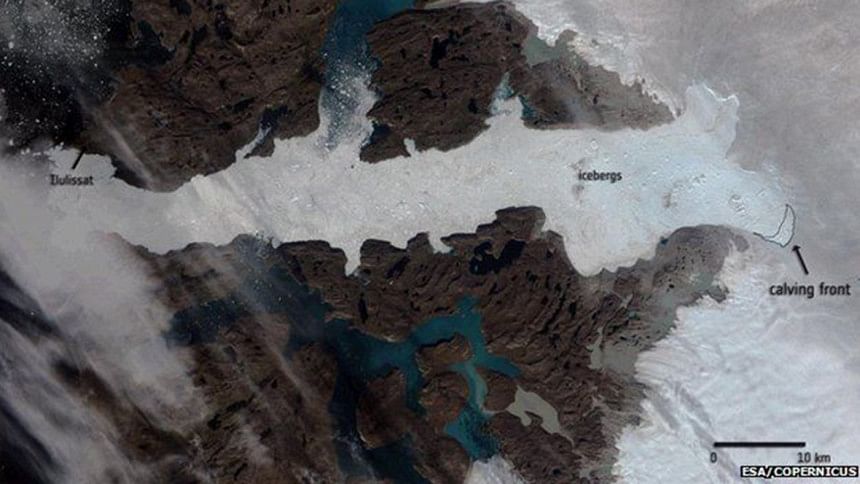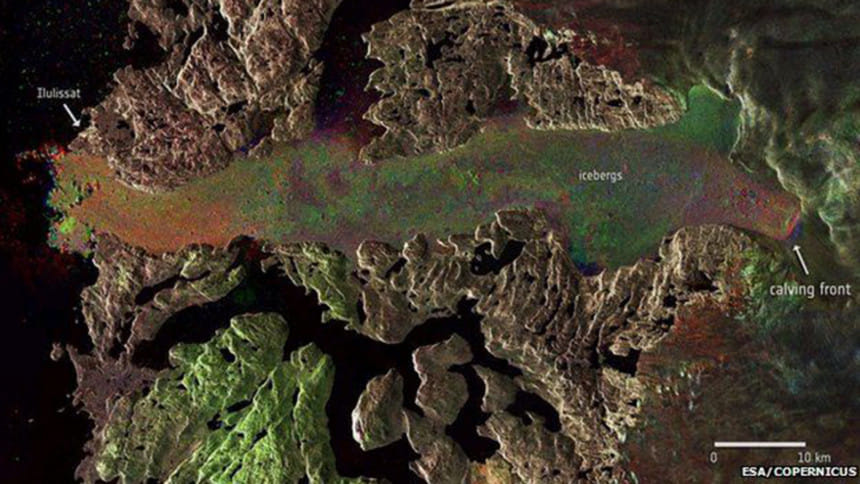Greenland glacier sheds big ice chunk

Scientists are studying a big mass of ice that has broken off the Jakobshavn Glacier in Greenland.
They say the 12.4km sq section is among the largest ever witnessed to come away from the ice stream's calving front.
Satellite imagery suggests the break-up occurred sometime between 13 and 19 August.
Jakobshavn is a major drainage channel for the Greenland ice sheet, producing roughly 10% of its icebergs.
Once discarded, the ice travels down a long fjord before entering the Davis Strait and heading towards the Atlantic.
It is widely speculated that the source of the berg that sank the Titanic was Jakobshavn.
Scientists say the glacier moves at tens of metres a day in Summer months, making it one of the fastest flowing ice streams in Greenland, if not the fastest.
The European Space Agency has been following events with the EU's Sentinel satellites.
Sentinel-1a is a radar platform. Not only can it see through cloud, it can also be used to map flow and elevation changes.

The Sentinel-2a satellite is Europe's new optical spacecraft and can provide context imagery.
Esa says that if the glacier lost a total area of 12.5 sq km, and assuming the ice is about 1,400m deep, then the volume calved would equate to about 17.5 cu km, "which could cover the whole of Manhattan Island by a layer of ice about 300m thick".
It has certainly moved the calving front of the glacier back several km.
Although big in Greenland terms, the ice calving event is still quite small when compared with Antarctica.
Great tabular bergs can break away from the southern polar ice sheet that are thousands of sq km in area.

 For all latest news, follow The Daily Star's Google News channel.
For all latest news, follow The Daily Star's Google News channel. 



Comments